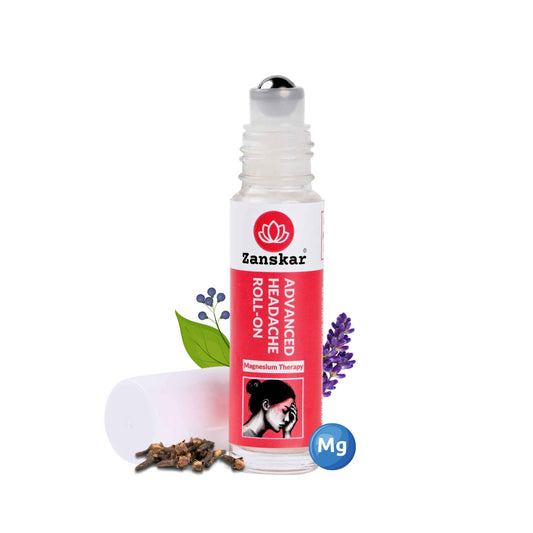
Does sleeping without a pillow help ease Neck Pain?

It’s no fun to wake up with a stiff, sore neck for no apparent reason. When this happens, there may be a sneaky culprit behind your neck pain: your pillow.
So, should you be using a pillow at all while sleeping?
The Answer is Yes. This is due to the natural curvature of your neck (if you sleep on your back) and the gap between your shoulders and neck (if you sleep on your sides) which needs to be filled for proper support. Pillow performs that role.
In general, pillows are used to support the head and neck while sleeping, which helps maintain proper alignment of the spine. However sometimes your pillow or sleeping position can place your neck in an awkward position that leads to pain or discomfort.
Zanskar Health does not recommend specific products or brands. This article is a general guideline for what to look for in pillows that can help prevent or reduce neck pain.
Can Your Pillow Cause Neck Pain?
It’s unlikely that your pillow is the sole cause of your neck pain, but it could make your neck pain worse, especially in the morning. Your pillow’s job is to hold your neck and head at the right height. If the pillow is too high or too low, your neck muscles try to compensate for the lack of support. Sometimes this can trigger neck strain and pain.
“We spend about one-third of our lives sleeping, so it’s important to have a good pillow that promotes proper neck and spine alignment,” explains Dr. Smriti, a physiotherapist at Zanskar Health: “The right pillow will provide support to ease neck pressure.”
An ill-fitting pillow, on the other hand, can make it harder for you to get a good night’s rest, which causes a vicious cycle. The more tired you are, the more likely you are to notice — and be bothered by — neck pain.
If you are experiencing neck pain while sleeping, it may be helpful to experiment with different types of pillows to find the one that works best for you.
What to Look for in a Neck Pillow
It can seem overwhelming to shop for the best pillow for neck pain. Here are some things to keep in mind.
· Pillow loft. This is the compressed height of the pillow when your head rests on it. There are usually low, medium, and high loft options. You don’t want a pillow that is too high, since it keeps the neck flexed, which can lead to morning pain and stiffness. Try a medium loft pillow (usually between three and five inches), suggests Dr. Smriti.
· Pillow firmness. “You want something firm that won’t budge on you,” says Dr. Smriti. Aim for medium firm, which is comfortable but provides enough support to cradle your head and help your spine stay in alignment while you sleep.
· Support. D-core and standard contour pillows are often the best options, since they gently contour to your neck and support it. This is especially important if you’re a back or side sleeper.
· ** Pressure relief. Look for a pillow that’s a good shape and size for your sleeping position and is firm** enough to reduce pressure at contact points.
Choosing the Right Materials
Here are common options:
· Down and feather pillows. These are a good option for people with neck pain, since they easily conform to the shape of your neck. Since they will collapse over time, however, they need to be replaced frequently — ideally, every year.
· Memory foam. These conform to the contours of your head and neck, which can help with spinal alignment.
· Latex. These pillows tend to have medium firmness, which makes them a good choice for neck pain. They also have a buoyant feel that holds your neck in place. A 2020 study published in the International Journal of Environmental Research and Public Health found that memory foam or latex pillows provide good neck support and improve sleep quality.
· Buckwheat. Since buckwheat hulls interlock and hold their shape, they are a good choice for people with neck pain who need more support. They tend to be more expensive than other types of pillows, and can take some time to get used to.
· Polyfoam. These offer some contouring and respond to pressure more quickly than memory foam. However, they do need to be replaced more frequently than other types of pillows, since they develop permanent indentations over time.
When to Change Your Pillows
The generally accepted wisdom recommends that you change your pillows every year or two.
Otherwise, your pillow will begin to sag and flatten, which means you won’t get the head and neck support that you need. Signs that your pillow needs to be replaced include:
· You wake up with a sore neck
· You’re unable to find a comfortable sleeping position
· Your pillow sags or develop lumps
· Your pillow is excessively yellow
Certain pillow materials last longer than others. A polyester pillow may only last a year, while a latex pillow could last for three years.
PT Tip: Stick to One Pillow
“A lot of folks like to stack them up, but that puts your neck in an awkward position, no matter how soft and squishy they are,” says Dr. Smriti.
Frequently Asked Questions
What’s better for your neck: a hard or a soft pillow?
Neither. “You want to use a medium to firm pillow — nothing too soft or too hard,” advises Dr. Smriti. Back and side sleepers in particular should go for the Goldilocks rule — not too hard, not too soft, just right. It’s also good to bear in mind that factors like how wide or narrow your shoulders are and how soft or firm your bed is can impact how a pillow works for you.
What’s the best type of pillow for each sleeping position?
If you sleep on your back, you’re best off with a rounded pillow to support the natural curve of your neck, and a flatter pillow to cushion your head. You can do this if you tuck a small neck roll into the pillowcase of a flat, soft pillow, or if you use a pillow with built-in neck support, including an indentation for your head. The best pillow for side sleepers with neck pain is one that’s higher under your neck than your head, which helps keep your spine straight. Stomach sleeping isn’t recommended for neck pain, notes Smriti. But if you do find yourself gravitating toward this position, look for a thin pillow that won’t elevate your head and neck too much.
Learn More About Zanskar Health
If you have joint or muscle pain that makes it hard to move, Zanskar offers the most advanced full stack pain relief solutions for you.
Now available to purchase, Zanskar® Advanced Pain Healing Cream has a unique formulation of natural ingredients like Arnica, Vitamin B6, MSM and Capsaicin, which is trusted by over 20L+ pain sufferers globally. It provides lasting relief from muscle and joint discomfort that you can feel good about. Get your fix before stocks run out - buy now.
You can also gain access to therapeutic exercises and stretches for your condition by downloading the Zanskar Health physiotherapy mobile app. Additionally, you’ll have a personal care team to guide, support, and tailor our program to you, including behavioral and nutritional coaching.
Download our mobile app here 👉 download and track your exercise streak.
Medical Review: This article is written by Dr Nishtha Mittal (Senior Health Content Editor at Zanskar Health) and has been medically reviewed by Dr Rashi Goel (Senior Physiotherapist at Zanskar Health). This article and its contents are provided for educational and informational purposes only and do not constitute medical advice or professional services specific to you or your medical condition.







